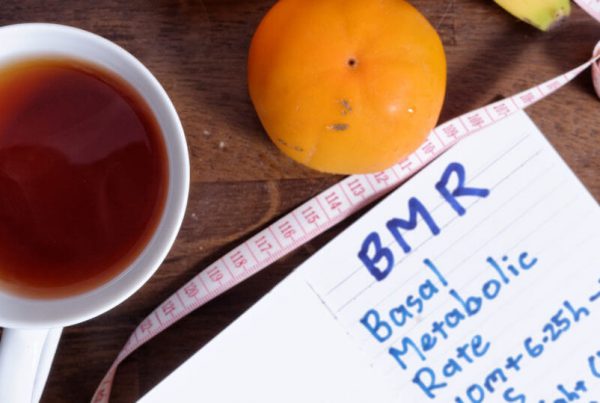BMI, or Body Mass Index, has long been held as the standard for measuring obesity . But for many years now, BMI has been coming under increased pressure – scrutinized and criticized for its failure to tell the whole story. Critics say BMI is too broad, its results are inaccurate, and it doesn’t really tell you anything about your body composition.
Now, more and more industries and organizations are moving away from BMI toward a more accurate, comprehensive, and realistic measurement: body fat percentage.
BMI: A Brief History
Your BMI is determined by dividing your weight by the square of your height. A BMI in the “normal” range falls between 18.5 and 25. So if you’re 5’10” you’ll want to weigh about 130-175 pounds. Simple, right? But the problem with BMI lies within that simplicity. The formula fails to account for a number of important factors. One of the reasons BMI fails to account for anything more than just height and weight is because it was never really designed to do more than that.
BMI was developed in the early- to mid-1800s by a Belgian scientist named Adolphe Quetelet. He envisioned a simple way to determine whether or not a person was overweight. For almost 200 years, it has remained the standard that medical professionals often turn to when researching obesity.
In fact, The World Health Organization currently uses it as the standard for recording obesity statistics and has done so since the early 1980s. That’s because on a macro level, BMI is still good for examining trends. It works for when you want to get the general feel for the overall health and well-being of a city or a nation. However, BMI should never be used to assess health on an individual level. There are simply too many flaws in the system.
One of the most famous examples of the flaws in the Body Mass Index system is Arnold Schwarzenegger. When the former California Governor was in the prime of his bodybuilding career, he was 6’0” and weighed 235 pounds. This gave him a BMI of 31, putting him in the obese range.
Anyone who has ever seen a photo of a young Arnold knows that, while there are many words that can be used to describe his physique, “obese” is definitely not one of them.
Enter Body Composition
So if BMI provides an incomplete health and wellness picture, how do you get the full picture? Body composition. Body Composition is the amount of fat, Lean Body Mass, etc., in your body. When you’re measuring leanness, you must account for these factors; it can’t be as simple as height and weight.
Body composition is essentially how much of your body is made up of fat vs. lean mass. If you’re interested in living a longer, healthier life, body fat percentage matters more than your weight, and much more than your BMI.
And remember, body fat percentage isn’t just about looking good, it’s about living longer. High fat percentage increases the risk of high cholesterol, which increases the chances of a heart attack.
How is body composition determined? There are many ways to assess body composition, and they vary widely in cost and accuracy. Let’s start with one of the most basic assessments.
The Tape Test. A Thing of the Past?
In recent weeks, the U.S. Army has come out in favor of a more comprehensive way to examine the health and well-being of its soldiers. This summer, the Army division charged with height and weight standards is undergoing a complete overhaul. One of the things that will receive a lot of attention in the review is the controversial tape test.

The Army Body Fat Calculator determines your fat percentage by taking two measurements, usually done with measuring tape. It asks for your gender, age, height. And then you measure your neck just below the larynx, and your waist at the level of the belly button. Combine those five factors and you come up with the Army’s definition of body fat percentage.
But there are problems with the test. Soldiers have long-contested whether the tape test is the best way to measure body fat. Specifically, women, bodybuilders, and “people with naturally thin necks or wide hips” say the test isn’t fair. The tape test has been reviewed in the past, and all the reviews usually say something along the lines of: “it’s not perfect, but it’s the best we can do for now.”
Sound like anything familiar? Like the tape test, BMI may not be perfect, but it is quick and easy. However, the tape test isn’t the only way to determine body composition, and for that, we turn to the world of professional sports.
A New Way of Thinking

Body composition is a new term that’s being thrown around at Green Bay Packer press conferences as of late. The Packers’ star running back Eddie Lacy has had his weight in the spotlight for years now. At a recent press conference, Packer Coach Mike McCarthy was asked about Lacy’s weight. He told reporters that he is no longer concerned with Lacy’s weight. “It’s based on his body composition,” McCarthy said.
The Packers use what’s called a DXA scan, or dual-energy X-ray absorptiometry, to determine their percentage of muscle and fat. The technology was originally used to measure bone density, but the same process can be applied to the rest of the body to provide an accurate picture of fat versus muscle. Of course, not everyone has the kind of budget the Packers are working with, so a DXA scan might not be in your future. So what are some other options for measuring your body composition?
Body fat calipers are a common option, and are often used by personal trainers. Also referred to as skinfold calipers, these hand-held machines pinch an area of your body and measure how thick the fold of fat under the skin is. The measurements are taken at anywhere from 3 to up to 11 different places on your body and can provide a quick and dirty body fat percentage measurement (especially when only 3 sites are used).
However, a second, far less intrusive method is bioelectrical impedance analysis, or BIA. BIA sends an electrical signal through your body. Based on how that signal interacts with the fat, muscle, and other elements of your body, the device is able to separate your weight into – at a minimum – Fat Mass and Lean Body Mass. More advanced devices can go further and provide outputs for Skeletal Muscle Mass, Visceral Fat, and Body Water.
Regardless of how you measure it, it is becoming clear that body fat percentage is a much more accurate measurement of your overall health than BMI.
So What Do I Do Now?
Once you start thinking of your weight in terms of what it is made of up (i.e. body composition), you will begin to get a sense of where you fall on the spectrum. You will also be presented with one of two options to begin your journey to a healthier you: in short, you will either want to increase your lean body mass or decrease your fat mass. Essentially, you’re looking to change your body composition, something also known as “body recomposition.”
If you have a high body fat percentage, you will want to focus on decreasing your fat mass. This can be accomplished by burning more calories a day than you take in. When you take in fewer calories than your body uses in a day, you encourage it to draw the needed energy from where energy reserves are stored – your fat cells.
Conversely, if you’d prefer to work on building strength and size before targeting your fat, focusing on developing your Lean Body Mass. The best way to accomplish this is by participating in a resistance training program and focusing on proper nutrition to encourage muscle growth and development.
Although BMI has been used for a long time to assess your weight (maybe even your doctor still records your BMI at checkups), if you’re really serious about improving your health and wellness, it’s time that forgot about your BMI and find a way to track and trend your body fat percentage.
Body composition is not a fad, nor is it a trend in the health and wellness industry. Despite being somewhat of a “new kid on the block” in terms of awareness among the general public, body fat percentage and Lean Body Mass have been well-studied and discussed in the scientific literature for decades.
But the winds of change are here: whether it’s the NY Times running a series of pieces on BMI’s failings last year, or the Mayo Clinic publishing exciting new research on the impact of body composition on your health just a few months ago.
Figure out your body fat percentage, and you’ll be well on your way to a healthier, happier you.
***
Randy Miller is a freelance writer who lives and works in Sacramento, CA. To get in touch with Randy about this article, you can find him on his website, www.randymiller.net.






